Metlakh tiles: varieties and use in the interior
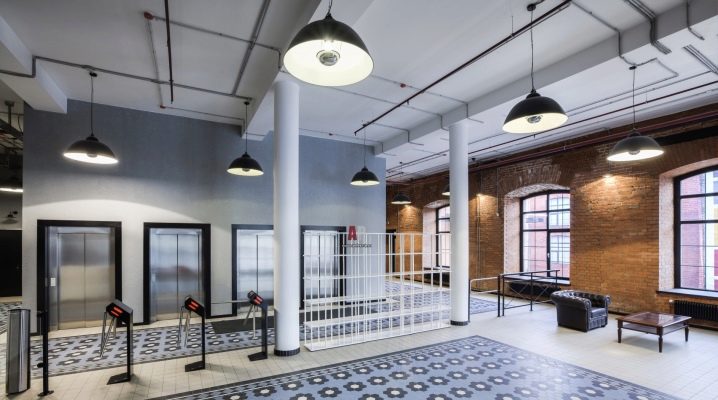
The building materials market today offers buyers all sorts of options for housing design: from unthinkable color shades to novelties of an unusual structure. However, many to this day are admirers of proven building materials, so to speak, classic. Metlakh tiles can be called classics., which for several decades has been a worthy decoration of the floor and walls of various premises. And if in the distant Soviet years this ceramic tile could not boast of a rich color scheme, today the imagination of manufacturers has no boundaries.
What it is?
Small ceramic tiles of various shapes appeared on the construction market more than 100 years ago and at that time became an indispensable element of interior decor. The composition of the tiles includes porcelain, therefore, after painting during firing at a temperature of 1200 degrees, it acquires a surprisingly strong structure, comparable to porcelain stoneware. Pigment is added to the mixture from which the tiles are obtained, as a result of which the color is almost natural, natural. Then the manufacturers apply a decorative pattern to the received material - they lower the model into a container with paint or use a method reminiscent of silk-screen printing.
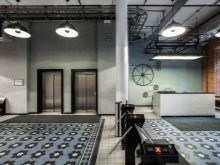
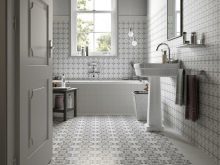
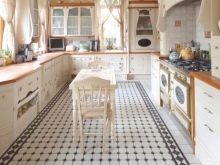
As a result, when the tiles are laid completely, their pattern becomes similar to a carpet. Thanks to the capabilities of the Metlakh tiles, it can be used in any style, but an interior with an oriental motive is an ideal "environment" for this type of decoration. It will ideally fit into a design with a predominance of geometric patterns - a zigzag, a Christmas tree, rhombuses or squares, and in different rooms - in the corridor, bathroom, kitchen and even the living room.
History of creation
Small-sized ceramic tiles have appeared more than 100 years in Germany, in the city of Mettlach, having received the corresponding name. It was produced at the Villeroy & Boch factory. Having appeared on the banks of the Rhine, it was actively used in Great Britain, and the most famous plant for its production is located in France - Winckelmans. At one time, the style, when high quality tiles were used in the premises, was called Victorian. Metlach tiles were especially popular in the era of Queen Victoria.
Its difference from competitors is small size and high strengththat allows designers to achieve amazing designs with rich color.
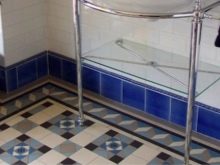
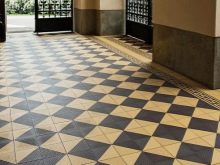
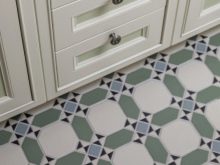
To this day, French manufacturers use the traditions of a century ago in the production of broomsticks, which is probably why the number of fans of such tiles does not decrease. There is a factory for the production of Metlach tiles in Portugal, but in Russia, Portuguese tiles can be found very rarely.
Metlakh tiles came to Russia only in the 19th century and firmly gained popularity among lovers of beauty and durability. It was used to decorate palaces, apartments, and state institutions.
In the era of total scarcity, durable metlakh tiles were almost the only decoration of state institutions: they were used in hospitals and schools. The only drawback of the decor was its dull color - it was believed that stains and stains of dirt would stand out on it.
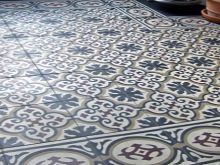
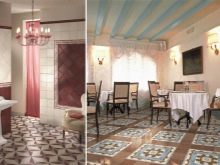
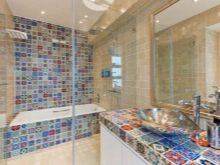
Today we can also enjoy Russian-made tiles. The plant "EuroCeramics", which produces it, was built in Pechora during the times of the USSR.In terms of quality, it is not inferior to its Western counterparts, but in terms of price - Russian tiles, the size of which is 300x300x20 mm, is much cheaper - about 200 rubles per meter.
For comparison, Western tiles reach 20 euros per square meter. Moreover, few of the imported manufacturers can boast of a hundred-year-old technology.
Properties
Many floor coverings have excellent durability characteristics, but Metlakh tiles are unmatched. According to experts, the main reason for this is the complete sinterability of the material. Therefore, such a coating is not afraid of moisture, heavy things can be put on it, as well as bulky objects can be moved along it. Metlach is absolutely resistant to chemicals and does not show signs of corrosion. The tile is not afraid of temperature changes, frost-resistant.
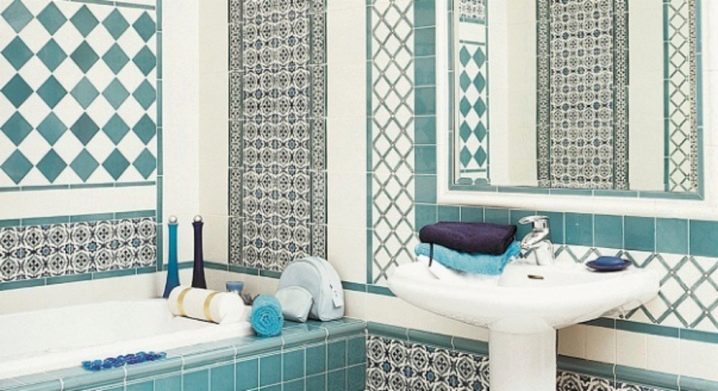
True, many call any small tile "broomstick", often even cement, sometimes large mosaics, however real ceramics, made in the best traditions of a century ago, have the following features:
- The composition includes clay and water.
- It is not covered with glaze.
- Made from refractory clay at a high firing temperature.
- It has a very low coefficient of water absorption - 0.1-0.5%, while in Europe these norms are about 0.6%.
- The color of the tile is uniform, usually it is painted in one color.
To this day, during archaeological research, church premises are found, the walls of which were laid with this tile, and it has retained a fairly decent quality. These characteristics allow the use of tiles as a facing material for floors and walls, both inside the building and outside.
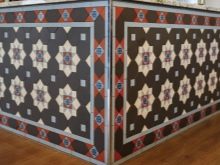


Advantages and disadvantages
The following advantages of metlakh tiles can be distinguished:
- Amazing durability and color fastness. This statement is supported by the fact that a considerable number of century-old European buildings to this day are decorated with exactly Metlakh tiles.
- Perfect frost resistance - after repeated experiments, it has been proven that ceramic tiles can withstand about 300 cycles of freezing at low temperatures and the reverse process - thawing.
- The moisture resistance of the broom allows it to decorate not only buildings, but also rooms with high humidity - a bathroom, a swimming pool and even saunas.
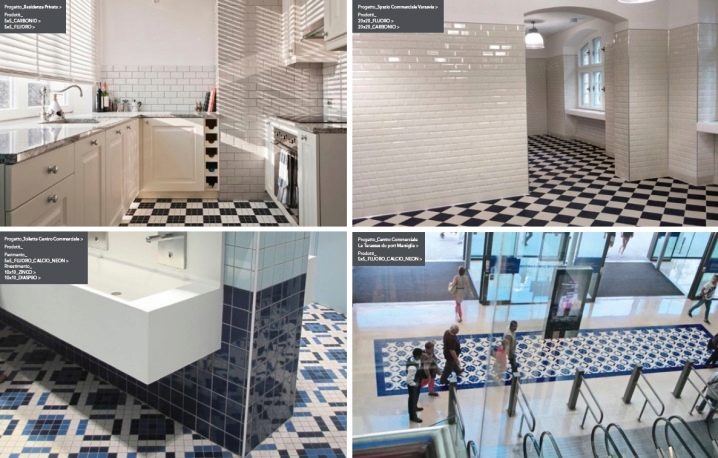
- Such facing material can be used to cover both fireplaces and stoves, since the broom does not contain synthetic materials and when heated, the tile does not emit fumes that are harmful to human health.
- The tiles are capable of supporting a weight of 380 to 450 kg per cm².
- Such material is not afraid of scratches, over time it does not wear out.
- The price of tiles is quite affordable and affordable for everyone.
The most significant drawback of this tile is coldness. The floor covered with it is very unpleasant to the touch, and walking barefoot on it is uncomfortable.
One more point - the tiles are rather inconvenient to cut with a tile cutter. Some ordinary people believe that material such as broomstick is outdated, and more sophisticated analogues are replacing it.
Views
The Russian plant "EuroKeramika" is practically the only one in our country that produces high-quality acid-resistant ceramic tiles. It is quite inexpensive and is used in almost all technical premises.
The material is used that is resistant to all kinds of chemical solutions and in various auto repair shops, sanitary rooms, lobbies, restrooms. Many facing materials, which get technical oil or alkali, inevitably lose their presentable appearance, unlike a broom.
Tests of the tiles were carried out in a solution in 70% sulfuric acid, where the samples of the tiles were kept for more than twenty days, after which the experts were able to make sure that none of its technical characteristics "lost" their positions: neither color nor shape changed.

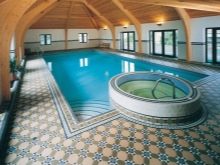
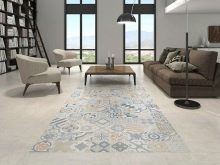
Today, many manufacturers produce tiles that look very similar to Metlakh, the so-called imitation.Not every factory can afford to use the technology of centuries-old German masters, therefore ceramics, which have some qualities similar to a real broom, are quite often found on the shelves of hardware stores.
For example, Italian manufacturers are ready to offer customers an interior design option that imitates Metlakh tiles - from monochromatic to decorated with various geometric patterns.
There are several types of metlakh cladding. Thin - when the cut surface is smooth and uniform at the fracture line. In the production of rough tiles, the surface consists of large, granular inclusions.
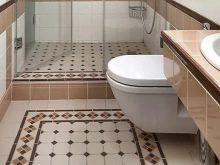
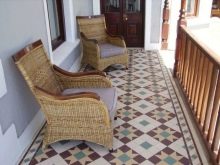
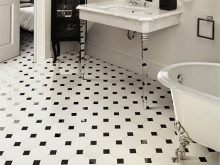
Manufacturers today create ceramics in a variety of ways:
- Casting. The tile obtained in the process of pouring the alloy into special forms and further drying and firing it has a drawback - it turns out to be of different thicknesses, and the manufacturer has to reject a considerable amount of products.
- Pressing. Clay, water and special additives are pressed under strong pressure, then tiles of the required size are cut from the resulting raw materials. As a result, it turns out to be porous, it is often laid on the floor.
- Extrusion. The raw material in this production process is obtained using a so-called mouthpiece and is in the form of a ribbon. Then it is cut and sent for firing. Special equipment allows you to adjust the thickness and size of the tiles.
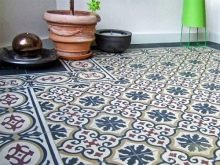
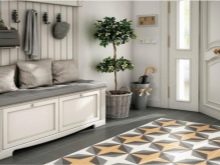
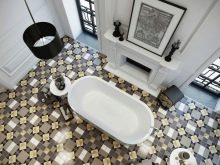
Dimensions (edit)
Despite the usual small-format shape of the broom, its dimensions do not always repeat each other. Externally, the tile resembles a mosaic.
Today, manufacturers are ready to offer us ceramics in sizes from 3.5 to 15 cm. The sides of a rectangle, for example, can be 48 mm and 23 mm. As for the thickness, it can be 200, 300 and 350 mm. The width according to GOST ranges from 200 to 300 mm.
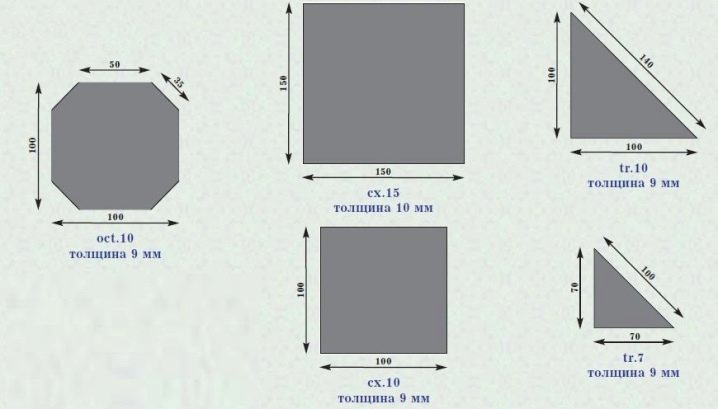
The broom shape can be hexagons, triangles, squares and rectangles, as well as crosses.
True, some manufacturers do not always adhere to GOSTs and offer us tiles of different sizes - from 65x65 to 150x150 mm. The thickness of such tiles is from 6 to 11 mm.
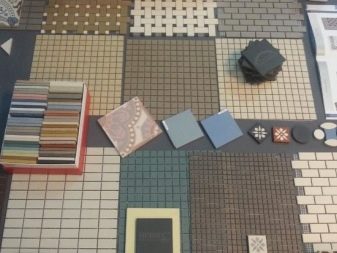

Colors and designs
When choosing a broomstick, think not only of fashionable design trends, but also of the practical aspects of using it:
- Light colors will visually expand the room. In addition to white, it can be blue and pink, beige and light yellow.
- Any stains will be less noticeable on dark tiles, which also have a grainy texture.
- When choosing a color, keep in mind the lighting in the room and the harmonious combination of colors.
- If you lay the elements at right angles, each of them will seem to you a different shade.
- If your room is lit by several lamps, then different tones of the cladding can take on completely different tones.
- The burgundy and beige colors are well combined, as well as the classic ones - black and white.

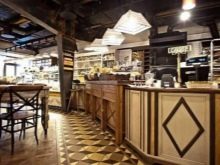
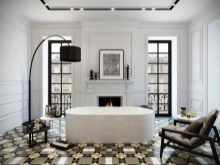
Metlakh tiles will surprise all lovers of sophistication and style. Inexpressible patterns on the walls and on the floor will create a unique atmosphere. If you want to place the panel on the floor in your cozy kitchen, then the hexagons in the form of bee "honeycombs" covering part of the floor will create a unique sophisticated modern style. This arrangement will make it possible to zone the open space in a very original way.
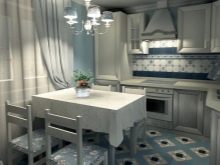
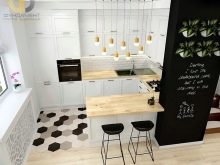
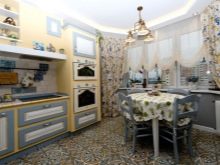
The black and white checkerboard pattern in the living room is a classic of the genre. Decorative finishing of the floor with metlakh tiles is an opportunity to choose both a monochromatic high-quality coating and patterns of a unique shape. Bright geometric shapes on the floor that greet you in the hallway or lobby will create a festive mood.

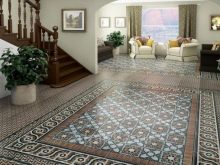
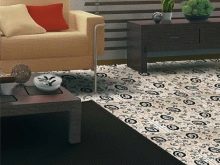
Perfect for brooms and for decorating the so-called apron in a modern kitchen. Bright hexagons with intricate patterns applied to them will certainly decorate the interior of the room.
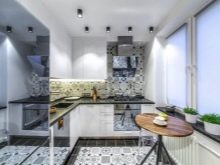
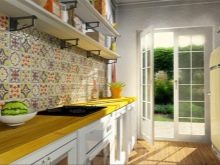
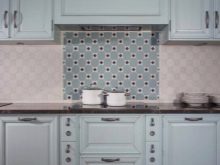
Due to its durability, such a cladding is also suitable for an open veranda, as a result of which it is possible to "revive" the space in front of the entrance.

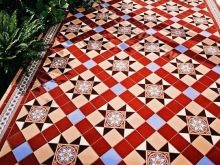
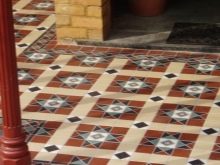
Ceramic “carpet” made of metlach tiles will be the perfect covering in your bathroom - thanks to its quality and color stability, you will not have to worry about water getting on the floor. By the way, if you really liked the floor tiles, and you need to cover the walls, you can safely use the broomstick: it is much stronger and will perfectly complement the interior of the premises.
Care rules
Taking care of the Metlakh tiles is as easy as shelling pears. She is not afraid of moisture, and you can get rid of dust and dirt with the help of warm water and a mop. Any synthetic product can be added to the water. The only moment when difficulties may arise is immediately after laying the tiles: it is necessary to wash off the remnants of cement or concrete dust or the remnants of construction waste. Cement dust must be washed off with chemicals.
Some experts believe that stains, especially those stuck into the coating, can be washed off with water and vinegar, and to give it additional shine, with a cork greased with paraffin.
Beautiful examples in the interior
The decoration of spacious halls or living rooms with metlakh tiles may seem like an amazing carpet. The geometric pattern can be used as a decoration for a single-color tile that is in harmony with it in terms of color.
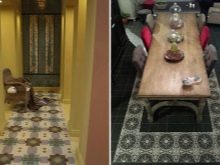
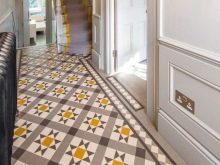
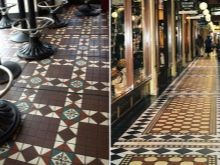
Bright and beautiful terraces pleasing to the eye with juicy color and intricate interweaving of patterns on your suburban area or cottage will become a sign of your taste.
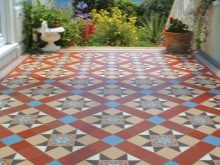
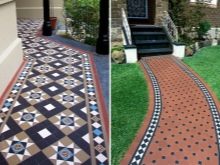
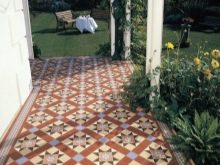
Facing the fireplace with colored tiles is the perfect solution. The apron-bump of heat behind the fireplace in warm colors or the original area in front of it can also be decorated with Metlakh tiles.
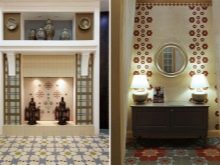
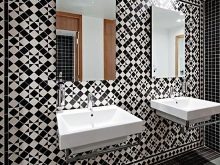
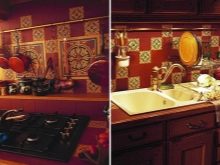
Metlach is perfectly combined with other building materials, which further reveals the possibilities of this wonderful facing material. Using stone, wood or even parquet, you get a unique design in a sophisticated style, combining these noble materials with the most durable tiles.
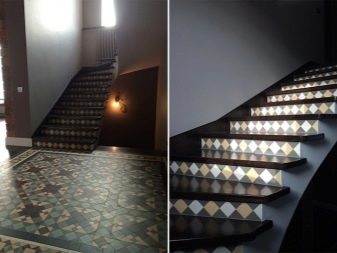
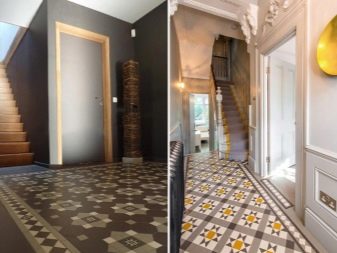
Choosing metlach tiles for decorating your own home, you get excellent quality in tandem with amazing decor.
See the following video for the process of laying metlakh tiles.













The comment was sent successfully.